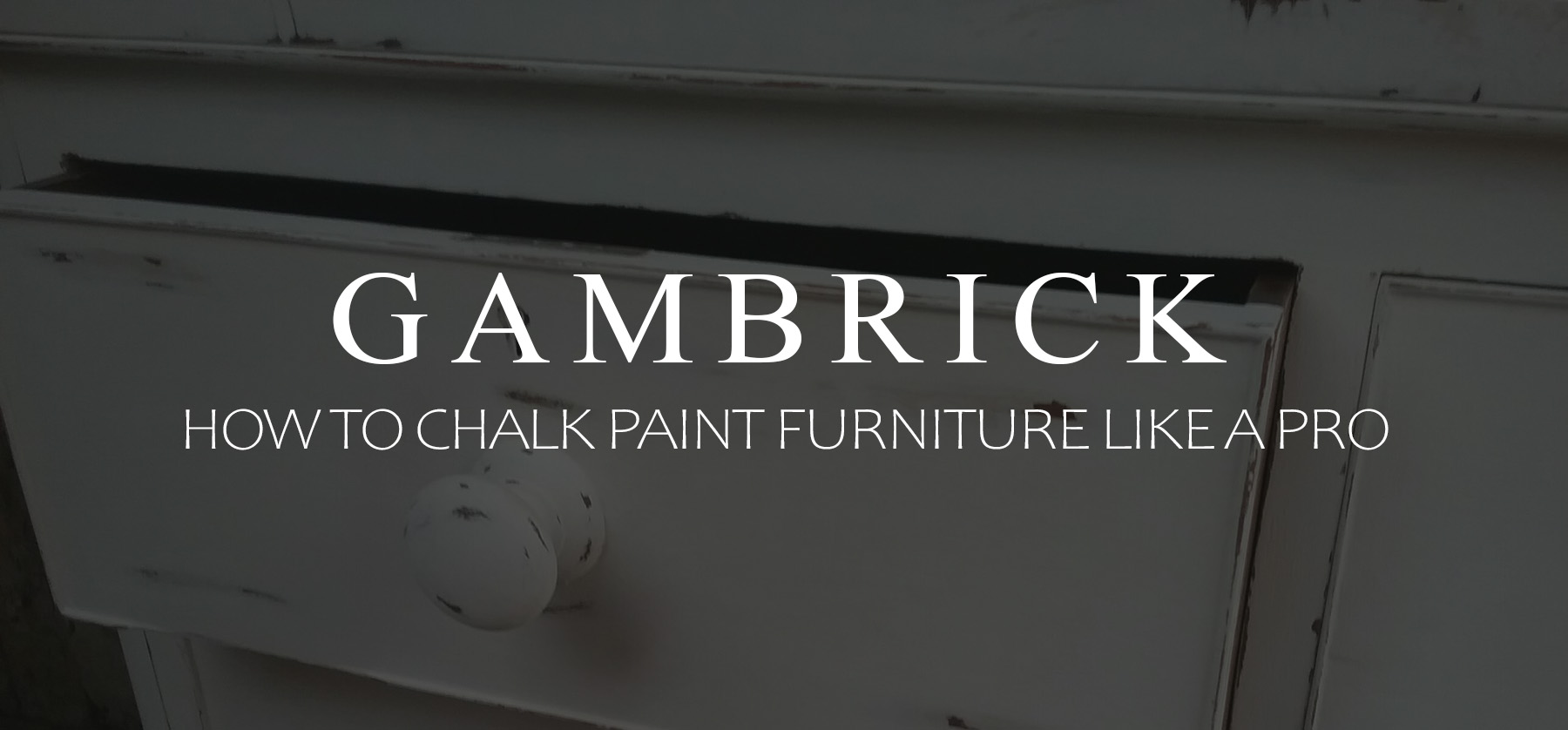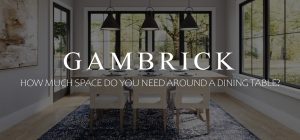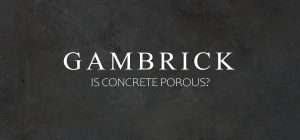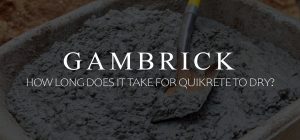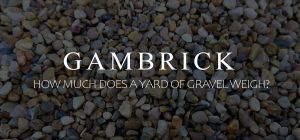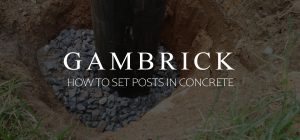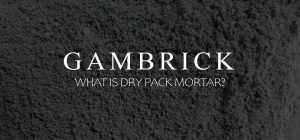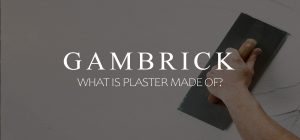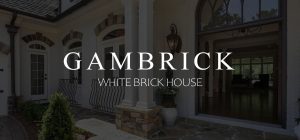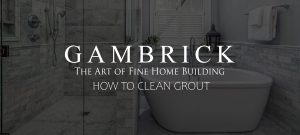How To Chalk Paint Furniture Like A Pro
Painting furniture with chalk paint is a little bit different than using conventional paints. Generally chalk paints are not meant to cover the entire surface evenly. This leaves bits of exposed under color. The look is meant to mimic something old and antique. Painting furniture yourself with traditional paint is easy to do and can have excellent results because you paint everything thoroughly. But it’s a little harder with chalk. The process is more artistic and unique to the painter. Preparation of the furniture’s surface is important so get a good sanding pad to remove old clear coats. However the surface doesn’t have to be perfect and you won’t need primer. Chalk paint jobs actually look better when they look a little weathered. Use a brush or roller and not a spray gun to apply the paint. And make sure you repair any damage to the furniture before painting.
Tarps, rags, mixing sticks, tape, brushes, and rollers are all the general tools of the trade. I like to use a brush for everything but you can roll large areas. The key to great looking chalk painted furniture is a natural look. Make sure any damage is repaired and old finishes are removed before you paint but it doesn’t have to be perfect. Just make sure to remove old clear coats because new paint may not stick to them properly.
At Gambrick we make custom cabinetry, built ins and other furniture pieces so I have lots of experience painting my own furniture. We also do a lot of restoration work which has all sorts of additional challenges. Ahead I’ll go over the basic process we use to chalk paint furniture along with lots of Pro tips and tricks we use almost every day.
White chalk painted dresser with a distressed finish.
Chalk Painted Furniture Is Very In Style
If you spend any time looking at interior designs online, and I’m sure most of you do, you’ll see lots of chalk painted furniture. That’s because it’s very in style at the moment. Manufactures are even picking up on the trend by making new furniture look old. But I don;t think it’s a look that could be considered trendy. Antique furniture has had a weather look for centuries. Chalk paint is just a way to mimic the look. It’s a bit softer and more natural than a fresh furniture paint job.
One of the great things about chalk painted furniture is that it works with so many styles. It’s Antique, Rustic, Country, Traditional, Victorian, Colonial and also sometime Modern. And that ones a big surprise even to me. I’ve been in some Ultra Modern homes where you’d expect to find sleek, hard edged furniture. But instead the designers used weathered chalk painted pieces. The contrasts they created were beautiful and a really nice surprise. I love when designers take risk and subvert expectations. A good way to do that is with chalk paint.
And if you’ve got a more traditional home style or something rustic then chalk paint will slide right into your other decor. And then there’s the super in style Modern Farmhouse. Chalk painted furniture goes with just about everything you’ll find in these. Chances are that if you’ve found this article you already appreciate how great chalk paint can be. Now lets look at how you actually do it.
Prepare The Furniture For Chalk Paint
If you want your furniture to look professionally done, then one of the most important things is preparation. Most amateurs focus only on the painting, but Pros are more concerned with prep. Painting is actually the fun and easy part.
This is especially true when your using chalk paint. The reason is that the under colors are visible in certain spots. This provides all sorts of artistic and unique opportunities. You can use a 2nd a color under your main chalk color or leave it bare wood. If you leave it bare do you prefer it stained or unstained. And if your chalk painting over older furniture will you leave the original paint, paint over it and then chalk, or sand the old paint off. There are more options when you compare chalk paints vs regular furniture paint.
Think about the final design you want for your furniture before you do your prep. The reason is that the look should influence what type of prep is needed. For example, you don;t need to sand down the old paint if you want some of it to show.
To me, preparation and planning are two of the most important parts of a successful chalk paint job. I have a plan for each piece of furniture before I start and then prep as needed with that vision in mind.
White chalk painted dress with distressed finish.
How To Sand Furniture For Chalk Paint
Sanding furniture for chalk paint is a little different then if you were using traditional paints. The reason is more about the finished look and less about the actual paint. Since you won’t be completely covering the furniture with new paint, some of the old coloring can remain if you want that to be a part of your look.
If there are repairs that need to be made with fillers then of course you’ll need to sand them smooth. In these areas I recommend you get complete coverage from your chalk paint. Reserve bare spots and streaks for where you see original wood or under paint.
Always sand off the old clear coat because it can effect how your new paint sticks. Old paint and stain are generally OK to go over.
Start out with around a 150 grit sandpaper. Always start rough and then work down to a fine grit. But don’t use paper rough enough to scratch the surface. You want to sand down filler to a smooth finish not gauge into the surface. If you see sand lines then the grit is too hard. I like to sand in long even strokes over the entire surface.
Remember that it’s possible to over sand an area which can cause a dip or low spot on the surface. That’s why sanding has to be done evenly. Furniture generally has flat surfaces. To maintain that flat surface you have to sand everything down evenly just to surface level. Sanding blocks or a power sander are great for keeping the sanding even because they’re flat.
Be careful not to gouge the surface with a power sander. Remember, your just trying to remove old paint, clear coats, primer or filler. Not alter the surface of the furniture. Go lightly.
Sanding Is Dusty
When your sanding furniture for paint it’s gonna get a little dusty. Make sure you tarp off ares where you don’t want the dust to go because it’ll get everywhere. Sawdust from sanding wood isn’t so bad. But the fine dust that comes from sanded filler gets on everything.
I like to set up a prep and painting station in the garage. It’s easy to keep dust out of the house because the exterior doors have a bottom seal. Keep the windows and doors open if you can and wear a mask. It’s not good to breath in all that fine dust.
Make sure you wipe the furniture down with a soft damp rag when your done. Dust will interfere with how the paint sticks. And if it gets into the surface layer of the paint you’ll be able to feel it.
A trick I use when I can’t avoid sanding inside is to use a damp sanding sponge. They do the job and create less dust because the moisture absorbs it. I also keep a vacuum on hand to clean up as soon as I sand. Dust will get on your hands and sometimes your clothes and shoes so clean off before leaving the tarp.
Use Tarps
If your chalk painting furniture inside, make sure to use tarps. Put a big tarp on the floor and another over things you don’t want getting dirty. I can’t tell you how many people I know that painted furniture inside and got dust and paint everywhere. It’s easy to do, especially when your chalk painting a large piece.
Watch your shoes as you step off the floor tarp. It’s so easy to track dust or paint around the house with your shoes. Vacuum your hands and clothing before leaving the tarp. Don’t dust yourself off because that will just kick dust into the air. Use a vacuum or damp cloth instead.
Wear a mask and crack a window if your chalk painting furniture inside.
Chalk painted gray dresser with a distressed finish.
Dismantle The Furniture Before You Chalk Paint
It’s not always possible to do because some furniture is glued when assembled. But if you can, take the furniture apart before you chalk paint. When furniture is factory painted, it’s done in parts and then assembled later. Reproducing these steps gives you the best possible finish. It’s just like painting a car. Cars are painted in parts and then assembled later because once you put them together it’s much harder to paint all the smaller pieces. And some angles are impossible to get to once assembled.
Another benefit to disassembly is preventing pooled paint. When you chalk paint furniture, there are usually small gaps where different parts come together. If you paint furniture all at once, some paint will pool in these tiny gaps. But when you take the furniture apart before you paint, you get a much cleaner edge and a clean separation between the parts.
Take out all the drawers and doors too. Cabinet doors are easy to unscrew at the hinges and doors just pull out. Also take off any hardware and all the knobs. The more disassembly you can do the better your paint job will look.
Disassembly is even more important when your using more than one color or different mediums. For example, white chalk painted legs with a stained wood table is a very common look. Taking the furniture apart lets you stain and paint separately which make it easier to achieve the look.
Test The Color And Design
Color testing paints before you use them on your walls or furniture is a very important step. Paint colors can look different at the store or on a small swatch then they will in your home. This is mainly due to different lighting conditions and the surrounding colors.
When you choose a color at the store, your only looking at that one color without any context. By itself it may look great. However, when it’s part of a team and surrounded by other colors, it may not look as good. That’s why we also test out furniture colors in the actual setting they’ll be in. It’s one of the biggest challenges of being an interior designer. Lots of colors have to work together to create an overall color scheme and feel for the room.
Then there the design to consider. Chalk painting furniture is a very artistic way to paint. It’s not like regular paint where you just paint everything the same color. Chalk paint has streaks, areas where you see the under colors and a weathered look. Some times it looks streaky, some times cracked and aged, and other times very solid. There’s a ton of variety when it comes to how you’ll apply the chalk paint. I recommend having a solid plan going into your furniture project and doing some testing first.
How To Chalk Paint Furniture Step By Step
Here’s a simple step by step rundown of how we chalk paint our furniture.
Choose A Chalk Paint Brand and Color
I recommend Annie Sloan Chalk Paint. It’s a really good paint that works well on furniture. But there are lots of other manufacturers. Almost every brand offers some sort of chalk paint these days.
Prices range from $20 a gallon to over $100. Generally I buy either a pint or a quart depending on what I’m painting.
Choose A Brush & Roller
Choosing the right tools is just as important as the paint. Sponge brushes and cheap bristle brushes can leave streaks or bristles behind. If I’ve learned anything painting furniture over the years it’s that quality tools matter. Especially when your chalk painting because it’s more artistic that a traditional paint job.
You can do everything with one brush but I like to use a few different sizes. I also like to have both a flat and angled brush on hand.
I also like to buy a good quality roller. But you can save some money on the handle. I recommend a larger roller for flat panels and a very small one for trim. However I rarely use them. Almost all my chalk painting is done with a brush.
- Purdy brand brushes and rollers are the best in my opinion.
Additional Supplies
Before you start to chalk painting make sure you have all of the supplies you’ll need.
- Paste Wax. Used to seal and protect the paint.
- Tarps. Use one for the floor and to cover up anything you don’t want getting messy.
- Clean Rags. Great for cleanup and texture work.
- Paint can opener
- Painter’s Tape. I recommend frog tape.
- Paint Stick. To stir the paint.
- Ziplock baggies
- Cup of water
- Container to hold paint that you are painting with
- Screwdrivers. To remove hardware, drawer slides and knobs.
- Paper Towels. For cleanup and texture work.
- Paper plate
- Pencil. I like to mark my furniture lightly with a pencil before I paint to indicate areas I don’t want painted or to indicate where I want texture or distress..
Create A Workspace
I like to set up a workspace before I start painting. This can be anywhere really but I prefer doing it in my garage. However, for some heavy furniture I paint it in place. A big tarp for the floor and another for things I don’t want messy are enough to create a work space.
I like canvas tarps but cheap disposable plastic sheets work fine too. Tape the tarp to the floor. I’ve seen a lot of spills and accidents caused by bunched up tarps.
Prep & Clean The Furniture
Ask any great painter and they’ll tell you how important prep work is. The surface has to be clean and ready for paint if you want a professional looking finish.
- Repair the furniture first. It should be structurally sound before you worry about paint.
- Remove all the hardware, drawers, doors, knobs, drawer slides and shelves.
- Remove any gunk, residue, glue or stickers from the furniture. I like Goo Gone but any brand works. In some cases you may have to sand gunk off.
- Fill any damaged surfaces that you want repaired. One of the great things about using chalk paint is that you don’t need a perfect surface. In many cases a little wear and tear actually looks better.
- Sand down any fillers or rough spots as you see fit.
- Sand off old clear coats. New paint won’t typically adhere to them.
- Strip & Sand old paint as needed. For some furniture pieces we like work on bare wood but for others I like keeping the original paint.
- Clean. Remove any dust from sanding and any dirt that’s on the furniture. You want a clean surface. If you miss any dirt or grime then it’ll be locked in by the paint which can cause problems later.
- Tape where needed. Anyplace you don’t want paint should be masked off. I recommend using green Frog Tape.
Time To Paint The First Coat
It’s finally time to get some chalk painting done.
- Make sure your can of paint is mixed really well. Use a paint stick and stir from the very bottom. Pigment and liquid can separate after a while which is why the top of unmixed paint looks a bit watery.
- Dip your paintbrush in clean water and pat dry with a clean rag. You want to start with a damp brush.
- Pour your paint into a container and add 1 teaspoon or two of water. Stir well.
- Always keep your paint can capped when not in use to avoid drying out.
- Use a pencil to lightly draw out areas you don’t want paint or indicate spots where you want a textured look. Use this as a sketch for your painting.
- Dip your brush into the paint. Start slow and light.
- Paint with the grain of the wood. The first coat will be a bit streaky which is fine.
- If your using a roller for large areas make sure you apply a very thin coat. It’s easy to apply too much paint. When your roller is dry, go over areas you just painted again. Rolling over the same spot more than once will soak up excess paint. You can also go over these areas with the brush to create a brushed look.
- After the first coat wrap your wet paintbrush in plastic so it doesn’t dry out.
Additional Coats
Generally the first coat of chalk paint will dry in about an hour. Use the same steps to apply a second thin coat. In some cases you may need a third coat but typically 2 is enough.
- You can add some detail work in this stage like carefully painting around areas where you don’t want paint or adding some texture with a rag.
Clean Your Tools
It’s important to take care of your tools. Especially if you plan on using them again and again. Simple soap and warm water are enough. Don;t let the brushes dry with paint on them because it’s hard to get them clean again without damaging the hairs.
The brushes are most important but clean out your containers too if you plan on using them again.
Distress The Furniture
Distressing your chalk painted furniture can give it more character. It’s not necessary to do it but if you want a more vintage or rustic look this is a great way to do it.
Make sure to start distressing after the paint has dried.
- Use a piece of 220 grit sandpaper or a sanding block and rub it over the surface to grind away paint. Edges, corners, legs, etc. Use distress in spots that would normally get wear and tear so it appears natural. The idea is to mimic the look of warn antique furniture.
- Using a clean soft cloth to remove dust from the furniture.
Apply Wax
Wax seals your paint and to adds an additional protective finish. Apply the wax with a wax brush or a clean soft rag.
- Rub or brush the wax directly onto the painted surface. Remember a little bit of wax goes a long way. Applying a wax layer to painted furniture is just like waxing a car. Massage it in and then buff.
- Use another clean cloth to remove excess wax. Wipe in the direction of the wood grain as needed.
- Dark wax can be used instead of clear to create an aged vintage look.
- Be careful if you use a dark wax because the coloring can be string. Too much can overly darken the finish.
What Does Chalk Painting Furniture Cost
If you own all the equipment, chalk painting furniture is actually fairly cheap. Paints not that expensive and all you really need to chalk paint furniture is a brush. I recommend using a tarp and taping areas you don’t want painted but they’re not necessities. You can buy a decent paint brush for around $12 bucks and a plastic tarp for $3. A Small roll of Frog Tape will set you back around $10 bucks.
You’ll also need a sanding pad if the furniture has a clear coat but they’re not that expensive. A 3 pack at Home Depot costs around $7 bucks.
If you decide to use a roller on some of the larger sections, get one that gives a smooth finish. Apply the paint until the rollers dry and then go over the area again. The dry roller will pick up excess paint. You don’t want drips or pooled paint. A 3 pack of roller costs around $7 and you can get a cheap handle for around $5.
You can use a rag to apply texture to your chalk paint. Add on another dollar or two.
Protective wax costs between $15 -$25 for a small can. It’s needed to seal and protect the paint.
Then there’s the paint. There’s a wide range here. Gallons go for as little as $20 to as high as $100. Unless you have a huge amount of furniture to paint I doubt you’d use an entire gallon all at once. I buy my chalk paint by the pint or quart.
In total, if you don’t already own any of the equipment, expect to pay around $50 bucks for everything you need.
Furniture Painting Tips
It’s hard to chalk paint furniture right the first time if all you’ve ever done is paint walls. Here are some tips to help you achieve a professional looking finish.
- Cut in all of the edges and corners first. Make sure to feather out the end line with a brush so you don’t leave a straight line. You want a very soft edge.
- Don’t put too much paint on the brush or roller. Multiple very thin coats works best.
- Apply your paint evenly and very thin. Avoid runs or paint build up.
- Once you run out of paint on your roller, go over the sections you’ve already painted again. The dry roller will soak up excess paint.
- Start at the top and work down. Catch paint drips as you work.
- Paint slowly. Even thin coats work best.
- Test out the paint and design before you start painting.
Things To Check Before You Start Painting
Before you start chalk painting your furniture, it’s important to assess it first. Here’s a list of the most common things we look for.
What’s The Furniture Made Of?
Furniture is made from a wide variety of materials. Many of which can be painted. But for the sake of this article I assume the furniture your painting is wood. However, if your painting something different most of the info will still apply.
I always prefer to paint real wood furniture. It’s durable, easier to work with, sand, repair and paint. Other materials can be painted too but they require different prep work. Especially when you get into painting wicker, metal and plastics. Those are materials for another article.
Tailor your technique and choice of paint to the type of material your painting.
What’s The Furniture’s Condition
The first step in chalk painting furniture is the prep work. And the first step in preparing furniture for paint are the repairs. There’s no sense painting a piece of furniture that’s falling apart.
Check the following.
- Structural Components. Make sure the legs can support the furniture and that all the drawers and doors are in good shape. Also fix any detail work like trim.
- Veneer. If you have loose veneer then secure it with regular wood glue.
- Missing Parts. If your furniture is missing some of it’s parts you’ll either have to find them or make new ones.
- Surface Damage. Scratches, gauges, dents, scrapes, etc. Repair these with filler and sand then smooth prior to paint if you don’t want them. However, chalk paint sometimes looks better with some weathering so you may not want to fix every little ding.
- Smell. This may sound weird but you should always smell old furniture prior to paint. It’s a good way to spot mold growth. If you find some, it should be cleaned up immediately prior to paint.
Check The Value
It’s not a good idea to paint over valuable antique furniture. You may end up costing yourself a lot of money.
Just about any piece of wood furniture is a candidate for paint. But in some cases, especially when dealing with an antique furniture, the value is in the wood and remaining original.
This isn’t always about the age of the furniture though. For example, some tables are made from a solid slab of wood including the bark. They’re stained and never painted. Painting a table like this would destroy it’s value and saleability.
Just because a piece of furniture is old doesn’t make it valuable or an antique. It may just be old. Lot’s of old furniture has no value on it’s own and would be worth more if repaired and painted. It’s really a judgement call you have to make based on the value of the furniture your painting.
The first step is always assessing the piece. Find out what it is and if it has value. Then figure out if painting it would increase of decrease that value.
Another thing to consider is antique painted furniture. Many antique pieces were painted when new. If you paint them again it has to be done by a professional because this is considered restoration work. If the new paint isn’t perfect you could ruin the value of the furniture. In most cases I would just leave it alone. Imagine finding an antique car with an original paint job and then re-painting it a different color. Or painting it poorly. You’d ruin the value of the car. The same is true with some antique furniture.
Will Chalk Paint Make It Better?
Some furniture looks better with stain than with paint. It all depends on the furniture and what type of wood it’s made out of. Painting over a fine stain grade wood isn’t always a good idea. Remember that paint is permanent. You can strip paint and get some of it out, but you’ll never get it back to it’s original condition. Even if you sand blasted or sanded the furniture down it’s very hard to get all the paint out of the grain. There are usually traces of paint left behind.
Assess the furniture and make sure paint would be an improvement. For some pieces, it’s much better to use stain. But for others it’s a mistake that kills the value of the furniture.
Make Money Chalk Painting Furniture
Did you know you can make pretty good money chalk painting furniture. There are a lot of people out there making great money fixing and painting old furniture for big profits. It’s a great side hustle or small business. And I’m talking $100k+ a year good. Search online for what painted furniture is selling for these days. You can get virtually the same money for some refurbished chalk painted furniture as new.
Check out a local yard sale or your newspaper and buy a cheap piece of furniture that you think would look great chalk painted. Make sure its a piece that would sell easily and has good value. Make the needed repairs, give it a fresh paint job and then list it for sale. I like to do this with furniture I like because if it doesn’t sell for as high as I want I just keep it.
Summary: How To Chalk Paint Furniture Like A Pro
Painting furniture with chalk paint is a little bit different than using conventional paints. Generally chalk paints are not meant to cover the entire surface evenly. This leaves bits of exposed under color. The look is meant to mimic something old and antique. Painting furniture yourself with traditional paint is easy to do and can have excellent results because you paint everything thoroughly. But it’s a little harder with chalk. The process is more artistic and unique to the painter. Preparation of the furniture’s surface is important so get a good sanding pad to remove old clear coats. However the surface doesn’t have to be perfect and you won’t need primer. Chalk paint jobs actually look better when they look a little weathered. Use a brush or roller and not a spray gun to apply the paint. And make sure you repair any damage to the furniture before painting.
Tarps, rags, mixing sticks, tape, brushes, and rollers are all the general tools of the trade. I like to use a brush for everything but you can roll large areas. The key to great looking chalk painted furniture is a natural look. Make sure any damage is repaired and old finishes are removed before you paint but it doesn’t have to be perfect. Just make sure to remove old clear coats because new paint may not stick to them properly.
If you have any questions or comments e-mail us any time. We’d love to hear from you.
